During the Annual NFL Meeting in Orlando earlier this week, team owners voted on a number ofpotential changes to league rules and bylaws and ended up passing six rule changes, four bylaw changes and two resolutions. We'll discuss the two most dramatic changes below, but there are a couple more I find particularly interesting.
One, proposed by the Detroit Lions, changes the way that coaches can call for replay challenges. Previously, a coach started the game with two opportunities to throw the challenge flag but could get a third one if each of his first two challenges were successful. If either of the first two failed to overturn the original call, there would be no third challenge. Now, coaches can earn a third challenge if either of their first two were successful.
That seems like a big deal. More red flags will be launched (or sardonically spiked)! Coaches won't be as hesitant to listen to the voice in their headset telling them to challenge the call, knowing that it's not as punitive now to get one wrong. Your team won't be screwed over by bad calls as often (because you know it's always your team that gets shafted).
Or is it maybe not that big of a deal at all? To get to that potential third challenge, a coach first has to use his first two, obviously, and you know what? That's not a particularly common outcome. Last season, there were exactly 13 instances in which a head coach challenged two plays in a single game. That includes the postseason, so were talking about a total of 285 total games, and given that there are two head coaches in each game, that's 570 opportunities for coaches to throw two challenge flags. Thirteen out of 544 is only 2.3%. Of those 13 instances, only seven of them resulted in the coach winning one of his challenges and losing the other, which are the ones that would be affected by this rule. That's only 1.2%.
Assuming your favorite team is the Buccaneers, you would have never even noticed this rule change in either of the two seasons that Todd Bowles has been the head coach. Bowles only threw four challenge flags in 2023 (winning one and losing three) and that was one more than he threw in 2022 (going 2-1 in three tries). Not once in those two seasons did Bowles throw two challenge flags in one game.
Bowles was previously the head coach of the New York Jets from 2015-18, and only once in those four seasons did he challenge two calls in one game. That was in a 22-17 loss to the New England Patriots on November 27, 2016, and Bowles got both calls overturned so he would have had the third challenge available to him anyway. In other words, in six years as an NFL head coach Bowles has never been in a game in which the new challenge rule would have mattered.
Overall, there were 141 challenge flags thrown during the 2023 season, playoffs included. Coaches had a sub-.500 record in those attempts, getting the calls overturned on just 64 of them. The coach who threw the most challenge flags was the Los Angeles Chargers' Brandon Staley, who let it fly 11 times and went 5-6. Even with all those flags, this new rule would have applied to only two of Staley's games. Atlanta's since-deposed Arthur Smith was next with eight challenges in 2023, going 4-4. Arizona's Jonathan Gannon and the Cowboys' Mike McCarthy were at the bottom of the list with only one challenge apiece in 2023, and both went 1-0.Ironically, the team that proposed this new rule, Detroit, would have had no use for it in 2023 because Dan Campbell lost all four of his challenges. That was the NFL's worst challenge record last year.
I guess it only has to happen one time to Coach Bowles (or the opposing head coach) in 2024 for the new rule to matter to the Buccaneers. Still, history suggests that's unlikely to happen.
Now on to your questions.
A reminder that you can send questions to me any time you want on Twitter (@ScottSBucs) and they're easier to find if you include the hashtag #SSMailbagBucs. We are also now soliciting questions each week on our Instagram page; look for that story on Wednesdays. As always, if you want to get a longer question into the mailbag and would prefer to email your question, you can do so to tbbsocial@buccaneers.nfl.com.
Who was the longest tenured Buccaneer of all time? Is it Lavonte?
- _xoxsabrina (via Instagram)
No, it's not Lavonte David, at least not yet. He's got a shot, though, if he can continue to defy the aging process and play like a 25-year-old. Since he signed a new deal with the Bucs for 2024, which made everyone very happy, David is set to play his 13th season for the team this coming fall. That would tie for the third most seasons played for the Buccaneers in franchise history, matching Dave Moore's tenure. David's predecessor as the long-time standout Tampa Bay linebacker, Derrick Brooks, is second with 14 seasons in the Buccaneer uniform.
The man at the top of the list, however, was the true ageless wonder, Rondé Barber. Barber arrived as a third-round draft pick in 1997 and played his entire career in Tampa, finally retiring after the 2012 campaign. That was a 16-year run, which is pretty remarkable. So while David does still have a chance, he'll have to play next year and three more seasons after that, all in Tampa, to match Barber.
By the way, Barber's 16 seasons with a single NFL franchise is tied for the 18th most in league history by any player who spent his whole career with the same team. Among all cornerbacks, only Darrell Green is higher on the list, with 20 seasons in Washington. Lou Groza, who played tackle and kicker for the Browns for 21 years, and kicker Jason Hanson, who spent 21 seasons in Detroit, top the list.
The advent of true free agency in 1993 obviously made this type of career even more scarce because player movement from team to team became much more common. Barber is one of only 10 players whose entire careers fell in the free agency era to play for only one team and last at least 16 seasons. Four of those 10 are long-snappers or punters. Of the other six, only Barber and Ravens linebacker Ray Lewis were defensive players.
Are the Bucs able to sign another superstar?
- la.jajon (via Instagram)
I do not expect that to happen this offseason, no, for a couple of reasons.
First of all, it's a little late in the game to even find an available "superstar," even if we use the term loosely. Most of the star players who have a shot at free agency either get re-signed or tagged before the market opens or have new deals within hours of the beginning of the new league year, especially since the 52-hour "legal tampering" period was introduced. And they are always very pricey contracts.
Pro Football Focus ranked 100 potential free agents before the start of free agency, and only four of the top 50 have yet to re-sign, sign with a new team or receive a franchise tag. The highest ranked player on that list who has not yet landed a new deal for 2024 is cornerback Stephon Gilmore, who was traded from Indianapolis to Dallas last year. Gilmore definitely qualified as an NFL superstar at one point, as he was the NFL Defensive Player of the Year in 2019, but I'm not sure he'd be considered in that category in 2024.
The only other players still available in the top 50 on that list are former Texans cornerback Steven Nelson (who is 31 years old) at 36, former Dolphins center Connor Williams at 38 and former Jets tackle Mekhi Becton at 48. There's plenty of talent there, but I'd hesitate to label any as a superstar. Heck, there's nine players left in the 51-100 range on that list, not including the retired Fletcher Cox.
Really, the only way to land a superstar at this stage of the offseason is a trade. We've already seen former Panthers edge rusher Brian Burns and former Chiefs' cornerback L'Jarius Sneed move to new cities in this manner. Cincinnati wide receiver Tee Higgins could potentially be on the move at some point after getting the franchise tag and requesting a trade, but I would bet he ends up staying with the Bengals. Regardless, I wouldn't think Higgins would be a target for the Bucs after they got that new deal done with Evans.
Second, there's that cap situation for the Buccaneers, which was tight before the team got new deals done for David, Mike Evans, Baker Mayfield and Chase McLaughlin. There's also the matter of Antoine Winfield, who got the franchise tag and will either carry a large cap charge for one year on that tag or, more likely, will get a new long-term deal done with the Bucs at some point. And somewhere not too far down the road, the Bucs will be looking at a lucrative new long-term deal for star tackle Tristan Wirfs. General Manager Jason Licht has also brought in five outside free agents already, most prominently with former Jet (and former Buccaneer) safety Jordan Whitehead.
Licht spoke with the press for about 15 minutes during the Annual Meeting earlier this week and it sounded like any additional shopping the Bucs would be doing in free agency this offseason would not be in the premium aisles. The next opportunity for the Bucs to make some high-profile additions to their lineup will be in the 2024 draft in late April.
"We'll still keep an eye on some value that's out there," said Licht. "I wouldn't be surprised if we made a move on some value signings, but it's mostly transitioning to the draft right now."
The Bucs were essentially in the same mode last year and they made a couple of those types of "value" signings in April, landing safety Ryan Neal and guard Matt Feiler. Both opened the 2023season as starters in Tampa Bay. So it is possible that the Bucs will still get some helpful pieces in the next couple months, but I wouldn't expect any "superstars."
Thoughts on the new kickoff rule? Thoughts on the hipdrop tackle ban?
- bria.npassmore (via Instagram)
The same Bucs fan sent in both of these questions so I'm combining them into one. I'll start with the kickoff rule.
Quick summary: The kicker will still kick from his own 35, but the other 10 players on the cover team have to have one foot on the return team's 40-yard line. Either nine or 10 of the 11 players on the return team have to line up between their own 30 and 35-yard line, with either one or two kick returners stationed closer to the goal line. The area between the goal line and the 20-yard line is now called the "landing zone" and that's the kicker's target. If it is fielded in this zone it must be returned; there are no fair catches. If the ball goes into or beyond the end zone on the fly it is a touchback and the ball comes out to the 30. If the ball lands in the landing zone and then goes into the end zone and is downed, it's a touchback and the ball comes out to the 20. If the ball hits the ground before reaching the landing zone it is immediately dead and is treated as if went out of bounds before the end zone. In that case the ball is placed on the 40. The players in the set-up zone on both teams can not move until the ball is caught or hits the ground.
My thoughts on these radical changes is that I really don't know how this is going to play out. I could see some teams still trying to kick every ball into the end zone, even with the new 30-yard spot, because they're worried about giving up a lot of long returns. On the other hand, if you feel very good about your coverage players, you might see this is an opportunity to get a lot of opposing drives starting around or inside the 20, and that may be worth the risk.
Personally, I think we are definitely going to see a rise in kickoff return touchdowns, of which there were only four in the entire season last year (a new all-time low). That play was slowly weeded out of the game by touchback specialists and rules eliminating three-man wedges and eventually wedges of all kind. I agree that it is an exciting play and I'd like to see a few more of them (especially for the Bucs, who are in a lengthy drought in that regard), but I think there is a point where we could be getting too much of a good thing.
It seems like the best outcome for the kicking team is a ball that hits the ground in the landing zone and then goes into the end zone, and I think the most likely way to accomplish that is to hit a hard line drive out of reach of the return man. And while you didn't want line drive kicks with the old rules, because you wanted more hang-time to get your cover men down the field, it shouldn't matter as much in the new format. If you can't move until the returner catches the ball, what does it matter how long it takes that ball to get to him. For these reasons, I think most teams will put two return men back to split the field and try to thwart this strategy.
There's still a lot to learn about how this is all going to play out. However, I think my biggest takeaway at the moment is that coaching is going to be very important. If some of the coaches are able to figure out how to take advantage of the new format – for example, by designing blocking schemes that work very well and frequently create lanes through that single line of blockers – better than others their teams could have a huge advantage. That's the thing that worries me the most about these new rules, the possibility that they are going to create disproportionately big advantages for some teams over others.
As for the newly banned tackling technique, make sure you refer to it by it's full name, the swivelhip-drop tackle. That swivel part is key because that is how the league is describing how the defender "unweights himself" and swivels his hips to pull the runner down, landing with all his weight on the runner's lower legs. You can still grab a player from behind and pull him down the ground, you just can't do it by swiveling your lower half so that all of your weight transfers to the runner.
I've heard a lot of analysts compare this new rule to the league's previous efforts to stop defenders from leading with their helmets, but I have a different comparison. A few years ago the league made a point of emphasizing the part of the roughing-the-passer rule that disallows the defender from landing with his whole body weight on the quarterback. Early that season, there was a rash of such flags – I remember the Packers drawing them with surprising frequency – and some of them drew the ire of players and fans because they didn't look like fouls on replay. It seemed like the officials were emphasizing that rule a little too much in an effort to get defenders to change how they brought the quarterback down. As that season went on, things smoothed out, the flags didn't fly as often and the furor died down.
I could see a similar result with the swivel hip-drop ban this season. You may see a lot of such flags in the early going, and we as fans will probably think some of them were bad calls. We'll probably be mad about it for a while, then things will come down, the flags will come less frequently and everything will be back to normal.
I'll admit that it does concern me a bit that the NFLPA was so vocally against this rule change(which didn't stop it from passing unanimously). It's pretty clear that the point of the ban is reducing injuries to players, which in general is something I would think the NFLPA would be in favor of. And I'm sure the players are very concerned with the issue of their safety overall. That they don't want this technique banned despite it's higher potential for injury makes me wonder if there is some validity to their argument that at some point it's going to be too hard for a defender to do his job.
That said, I would say I'm a proponent of the ban, despite those concerns. I don't expect it to be a problem in the long run even if it causes some groans early on, and I don't think the game is going to be fundamentally changed for the worse.
Will the new safer kickoff encourage star players, like Tyreek Hill, being returners?
- ke_turrii (via Instagram)
I don't know. It will probably be safer to return a kickoff under the new format than the old, but it's still another play on which an injury could occur. I'm not sure a star like Hill, or more critically his coach, is going to want to take that (admittedly smaller) risk. Maybe they will do it only every now and then, in critical game situations, kind of how the Falcons used Cordarrelle Patterson in recent years. (By the way, the Steelers signed Patterson almost immediately after this rule passed. Is he going to score 10 touchdowns in this format?!)
I do think this will be a boon for free agents and draft prospects who have demonstrated kick return ability. If you're choosing between two receivers in the second round and one of them was also a good return man in college, that could be the deciding factor since you know there are going to be a lot more returns than there were before. And remember, as I noted above, I suspect most teams will keep two return men deep, so now teams are going to want more of those players. Last year, wideout Deven Thompkins was responsible for every single one of the Bucs'kickoff and punt returns. I highly doubt that will be the case in 2024.
It could also change the type of player that goes back deep for kickoffs. The Bucs used Thompkins, who is a small, fast and shifty receiver, in that role last year. I have heard some people describing the possible blocking schemes in the set-up zone as being similar to how an offense blocks for a running play, and depending upon how the cover team approaches it, all it may take to spring your return man to the end zone is one open lane, with no more cover man between that line and the opposite goal line. Maybe you will want to use running backs more in that role, guys who are used to seeing lanes develop in the offensive front and hitting them quickly. Yeah, you want a home run hitter for when you break through the line and have a 70-yard sprint ahead of you, but there are plenty of running backs in the NFL who could win that race. Think of Ronald Jones's 98-yard touchdown run in Carolina a couple years ago. He basically hit the whole, popped out on the other side with no defenders in front of him and outran safety Jeremy Chinn for the length of the field.
Are there any draft prospects that have caught your eye?
- hunter_5430 (via Instagram)
Remember that you're proposing that question to me and not to Jason Licht or anyone else on the Bucs' scouting or coaching staffs. As is always the case with my discussions on the draft, whatever I write is not intended to reflect the likes or draft strategies of Licht and his crew. If I did know who they want to draft (which I don't) it would be very foolish of me to reveal it, from that whole job-security angle.
So who do I like? I'm partial to UCLA edge rusher Laiatu Latu. Overall, I like the idea of using a first-round pick on an edge rusher this year after the release of Shaq Barrett. It's not a particularly top-heavy group of EDGE prospects this year, however; it's lacking that sure-fire top-five pick who is almost certain to become a double-digit sack guy in the NFL, like Nick Bosa or Myles Garrett. There's definitely things to like about Alabama's Dallas Turner, Florida State's Jared Verse, Penn State's Chop Robinson and Missouri's Darius Robinson, to name a few, but it doesn't seem like there's a consensus among the scouting community about any of them turning into a premier sack producer in the NFL. That will probably happen for some of them; it probably won't happen for all of them. If I'm using a first-round pick on an edge rusher I want to feel good about the chances of him becoming my top sack producer.
That's why I like Latu. Yes, scouts have reservations about him too. He didn't match some of the freakish athletic-testing numbers as some of the other guys and he doesn't have the longest wingspan. He also had a neck injury in 2020 that required surgery and led to him being medically retired at one point. He came back from that and was eventually cleared to return to the game and played 25 games for the Bruins over the last two years.
And what Latu did was produce, more so than any of the other highly-ranked EDGE prospects in the draft. He had 23.5 sacks over the past two seasons, including 13.0 last year to tie for fourth in the nation. He was literally the highest-graded college pass rusher by Pro Football Focus in 2023, leading the nation with 40.7 percent pass-rush win rate.
You can certainly project based on a player's athletic traits and how you intend to use him compared to how he was used in his college team's defense. For instance, that seems to have worked out for the Jaguars, who took Travon Walker with the first pick in the 2022 draft after he recorded only 9.5 sacks in three seasons and 32 games at Georgia. After a mostly quiet rookie season, Walker racked up 10.0 sacks for the Jags last fall.
On the other hand, Jacksonville took Walker over Michigan's Aidan Hutchinson, who had 16.5 sacks in his senior season alone. Hutchinson has 21.0 sacks over his first two seasons with the Lions, who took him with the next pick after Walker, and he made the Pro Bowl in 2023.Personally, I like the prospect who has already proved he can produce big numbers, and that'swhy I like Latu. But remember, I'm no scout and I don't pretend to be one.
Who was your favorite player growing up?
- xaviersantiagojr (via Instagram)
Well, I grew up in St. Louis, which is a baseball town. I knew everything about the baseball Cardinals and went to games any time I had the chance. At that time, St. Louis also had the NFL's Cardinals, so that was nominally my team. Two problems, though. One, until I was, say, a teenager, I didn't really understand the NFL beyond the surface level. I knew who the quarterbacks, wide receivers and running backs were but I probably had years when I couldn't name a lineman or linebacker on the Cardinals. You could say I was not an avid fan. And two, the Cardinals weren't very good for most of my childhood (in stark contrast to the baseball Cardinals, who were and still are awesome). Dallas would kill us every year, which is how I joined the legions of Cowboy haters out there.
I do remember, however, that I really liked Mel Gray when I was young. I couldn't have told you off the top of my head what his full career numbers looked like, but I just looked it up and he was pretty good! He made the Pro Bowl four straight years from 1974-77 (I was quite young at that time, thank you) and had one year when he led the league with 11 touchdown catches. And he played his whole 12-year career in St. Louis and was around long enough for a somewhat more NFL-educated me to enjoy.
Also, since the Cardinals' usually sucked I decided to become a San Diego Chargers fan because they threw the ball a ton and had the best uniforms in the league. I really liked Kellen Winslow Sr.
I wish I could tell you that I had a favorite Buccaneer player as a kid, but that team was definitely not on my radar. I know the franchise history inside and out now, but I didn't know much about the Bucs at all before I got here. However, my friend Nelson Luis, who is now the Buccaneers' Vice President of Communications, did grow up a Bucs fan. He says his favorite player was Lee Roy Selmon, with Doug Williams a close second.
View photos of Alonso High School and Newsome High School facing off during the first 'Battlegrounds' flag football game at AdventHealth Training Center on Tuesday, March 26, 2024.
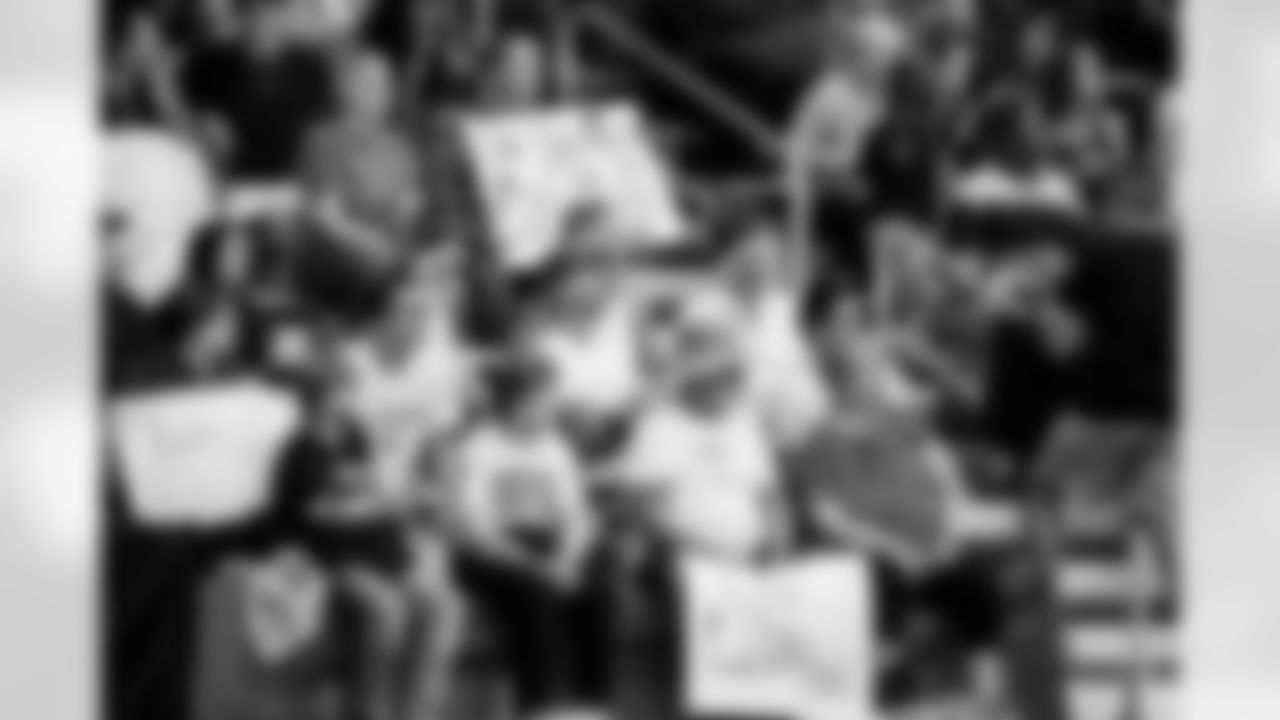
TAMPA, FL - March 26, 2024 - Crowd watches as Alonso High School and Newsome High School flag football teams face off during the first "Battle Grounds" flag football game at AdventHealth Training Center. Photo By Tori Richman/Tampa Bay Buccaneers

TAMPA, FL - March 26, 2024 - Alonso High School and Newsome High School flag football teams face off during the first "Battle Grounds" flag football game at AdventHealth Training Center. Photo By Tori Richman/Tampa Bay Buccaneers

TAMPA, FL - March 26, 2024 - Crowd watches as Alonso High School and Newsome High School flag football teams face off during the first "Battle Grounds" flag football game at AdventHealth Training Center. Photo By Tori Richman/Tampa Bay Buccaneers
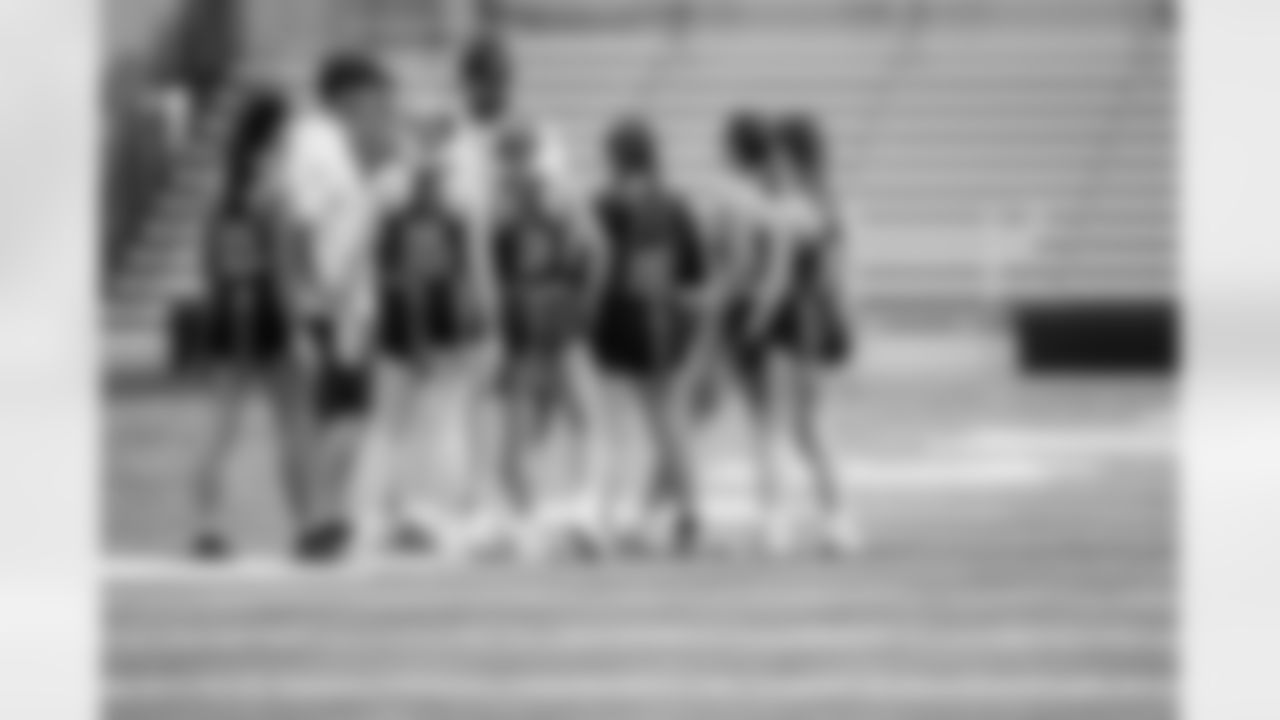
TAMPA, FL - March 26, 2024 - Alonso High School and Newsome High School flag football teams face off during the first "Battle Grounds" flag football game at AdventHealth Training Center. Photo By Tori Richman/Tampa Bay Buccaneers
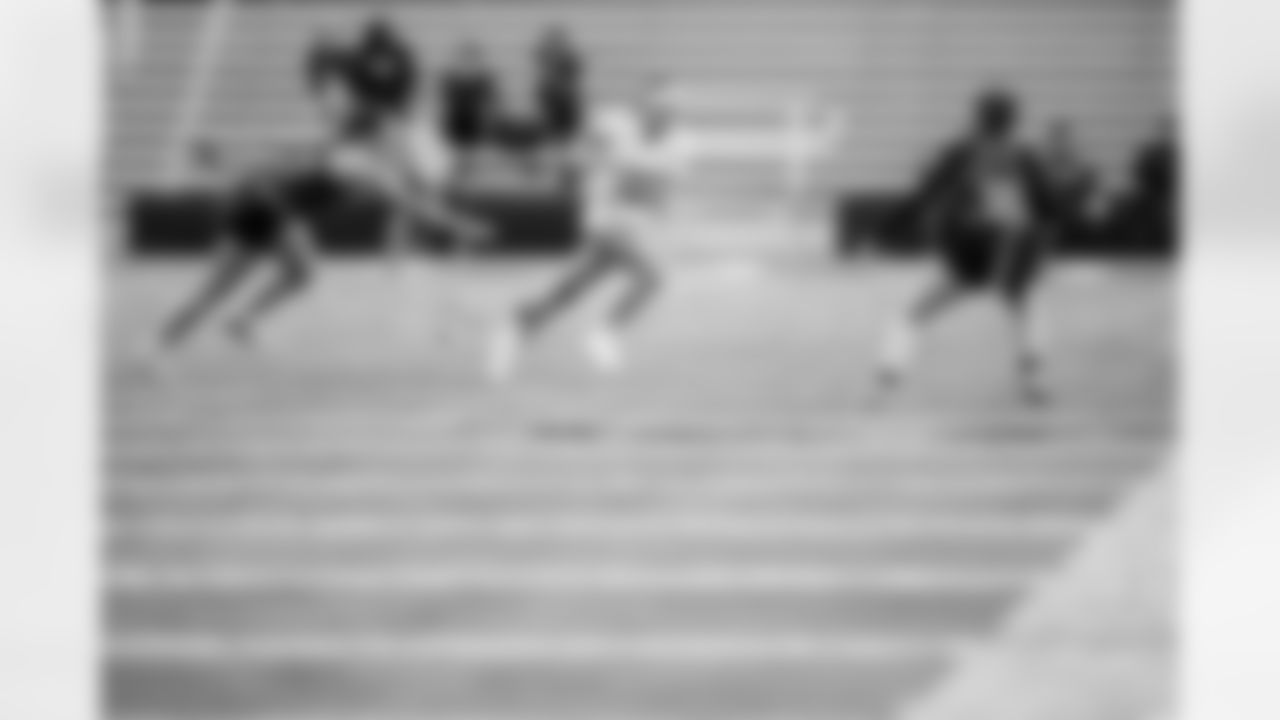
TAMPA, FL - March 26, 2024 - Alonso High School and Newsome High School flag football teams face off during the first "Battle Grounds" flag football game at AdventHealth Training Center. Photo By Tori Richman/Tampa Bay Buccaneers

TAMPA, FL - March 26, 2024 - Alonso High School and Newsome High School flag football teams face off during the first "Battle Grounds" flag football game at AdventHealth Training Center. Photo By Tori Richman/Tampa Bay Buccaneers
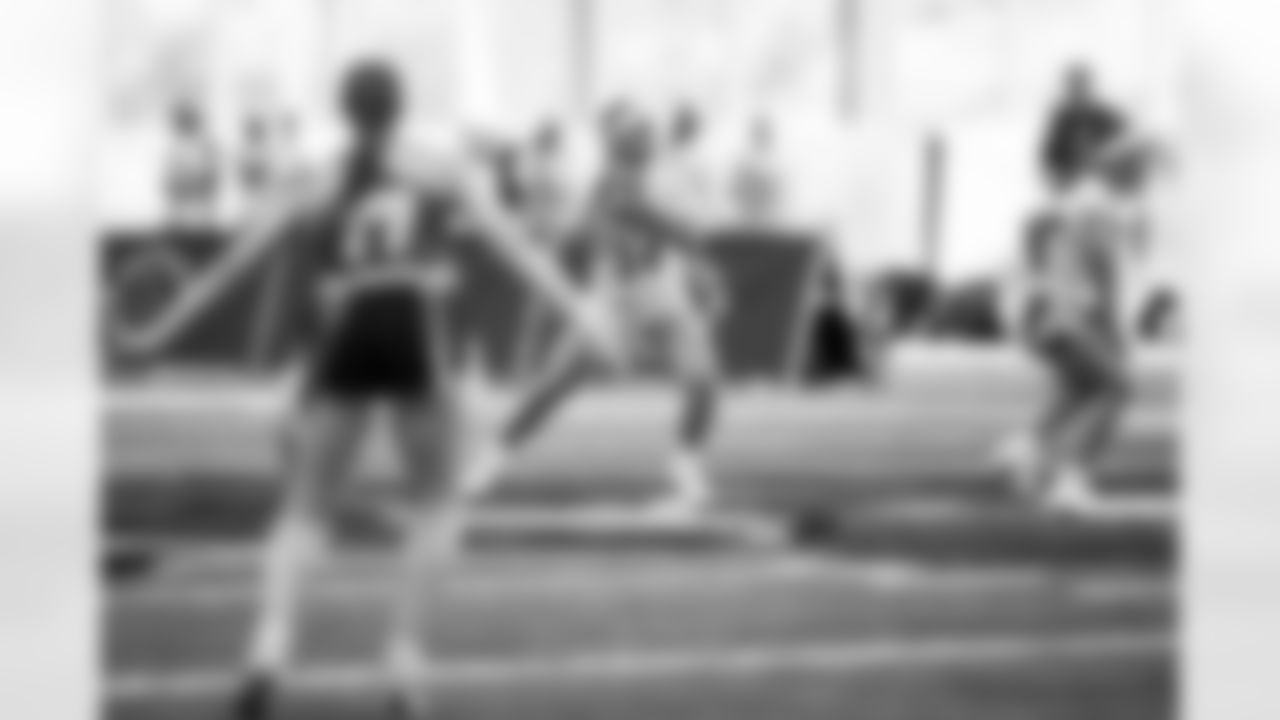
TAMPA, FL - March 26, 2024 - Alonso High School and Newsome High School flag football teams face off during the first "Battle Grounds" flag football game at AdventHealth Training Center. Photo By Tori Richman/Tampa Bay Buccaneers

TAMPA, FL - March 26, 2024 - Alonso High School and Newsome High School flag football teams face off during the first "Battle Grounds" flag football game at AdventHealth Training Center. Photo By Tori Richman/Tampa Bay Buccaneers
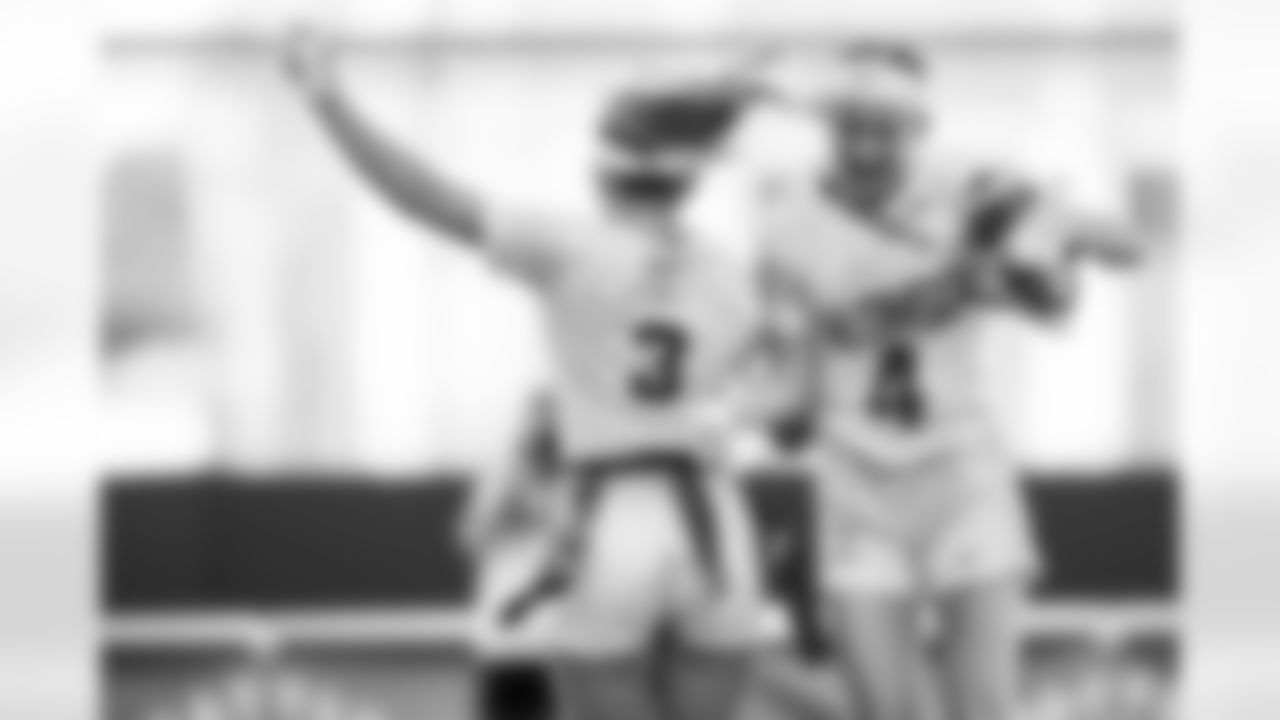
TAMPA, FL - March 26, 2024 - Alonso High School and Newsome High School flag football teams face off during the first "Battle Grounds" flag football game at AdventHealth Training Center. Photo By Tori Richman/Tampa Bay Buccaneers

TAMPA, FL - March 26, 2024 - Alonso High School and Newsome High School flag football teams face off during the first "Battle Grounds" flag football game at AdventHealth Training Center. Photo By Tori Richman/Tampa Bay Buccaneers

TAMPA, FL - March 26, 2024 - Alonso High School and Newsome High School flag football teams face off during the first "Battle Grounds" flag football game at AdventHealth Training Center. Photo By Tori Richman/Tampa Bay Buccaneers

TAMPA, FL - March 26, 2024 - Alonso High School and Newsome High School flag football teams face off during the first "Battle Grounds" flag football game at AdventHealth Training Center. Photo By Tori Richman/Tampa Bay Buccaneers

TAMPA, FL - March 26, 2024 - Alonso High School and Newsome High School flag football teams face off during the first "Battle Grounds" flag football game at AdventHealth Training Center. Photo By Tori Richman/Tampa Bay Buccaneers

TAMPA, FL - March 26, 2024 - Alonso High School and Newsome High School flag football teams face off during the first "Battle Grounds" flag football game at AdventHealth Training Center. Photo By Tori Richman/Tampa Bay Buccaneers

TAMPA, FL - March 26, 2024 - Crowd watches as Alonso High School and Newsome High School flag football teams face off during the first "Battle Grounds" flag football game at AdventHealth Training Center. Photo By Tori Richman/Tampa Bay Buccaneers

TAMPA, FL - March 26, 2024 - Alonso High School and Newsome High School flag football teams face off during the first "Battle Grounds" flag football game at AdventHealth Training Center. Photo By Tori Richman/Tampa Bay Buccaneers

TAMPA, FL - March 26, 2024 - Alonso High School and Newsome High School flag football teams face off during the first "Battle Grounds" flag football game at AdventHealth Training Center. Photo By Tori Richman/Tampa Bay Buccaneers

TAMPA, FL - March 26, 2024 - Alonso High School and Newsome High School flag football teams face off during the first "Battle Grounds" flag football game at AdventHealth Training Center. Photo By Tori Richman/Tampa Bay Buccaneers

TAMPA, FL - March 26, 2024 - Alonso High School and Newsome High School flag football teams face off during the first "Battle Grounds" flag football game at AdventHealth Training Center. Photo By Tori Richman/Tampa Bay Buccaneers

TAMPA, FL - March 26, 2024 - Alonso High School and Newsome High School flag football teams face off during the first "Battle Grounds" flag football game at AdventHealth Training Center. Photo By Tori Richman/Tampa Bay Buccaneers

TAMPA, FL - March 26, 2024 - Alonso High School and Newsome High School flag football teams face off during the first "Battle Grounds" flag football game at AdventHealth Training Center. Photo By Tori Richman/Tampa Bay Buccaneers

TAMPA, FL - March 26, 2024 - Alonso High School and Newsome High School flag football teams face off during the first "Battle Grounds" flag football game at AdventHealth Training Center. Photo By Tori Richman/Tampa Bay Buccaneers

TAMPA, FL - March 26, 2024 - Alonso High School and Newsome High School flag football teams face off during the first "Battle Grounds" flag football game at AdventHealth Training Center. Photo By Tori Richman/Tampa Bay Buccaneers

TAMPA, FL - March 26, 2024 - Alonso High School and Newsome High School flag football teams face off during the first "Battle Grounds" flag football game at AdventHealth Training Center. Photo By Tori Richman/Tampa Bay Buccaneers

TAMPA, FL - March 26, 2024 - Alonso High School and Newsome High School flag football teams face off during the first "Battle Grounds" flag football game at AdventHealth Training Center. Photo By Tori Richman/Tampa Bay Buccaneers

TAMPA, FL - March 26, 2024 - Alonso High School and Newsome High School flag football teams face off during the first "Battle Grounds" flag football game at AdventHealth Training Center. Photo By Tori Richman/Tampa Bay Buccaneers
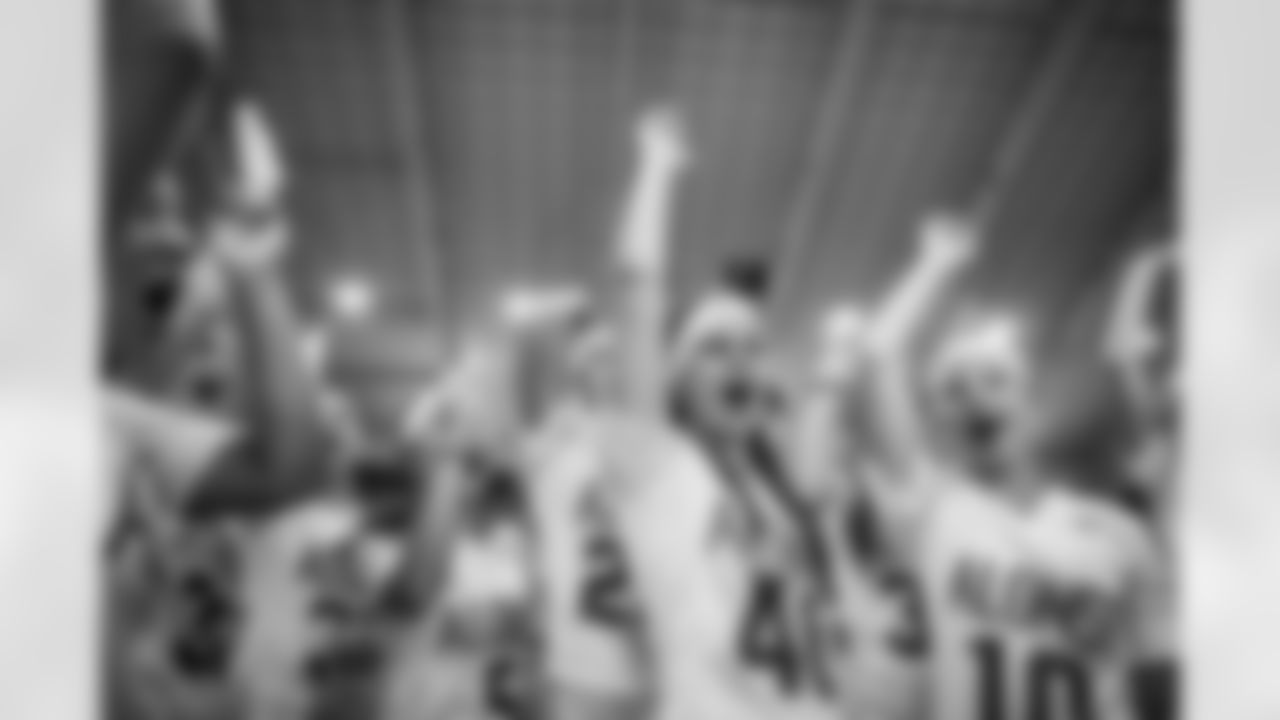
TAMPA, FL - March 26, 2024 - Alonso High School and Newsome High School flag football teams face off during the first "Battle Grounds" flag football game at AdventHealth Training Center. Photo By Tori Richman/Tampa Bay Buccaneers

TAMPA, FL - March 26, 2024 - Alonso High School and Newsome High School flag football teams face off during the first "Battle Grounds" flag football game at AdventHealth Training Center. Photo By Tori Richman/Tampa Bay Buccaneers

TAMPA, FL - March 26, 2024 - Alonso High School and Newsome High School flag football teams face off during the first "Battle Grounds" flag football game at AdventHealth Training Center. Photo By Tori Richman/Tampa Bay Buccaneers

TAMPA, FL - March 26, 2024 - Crowd watches as Alonso High School and Newsome High School flag football teams face off during the first "Battle Grounds" flag football game at AdventHealth Training Center. Photo By Tori Richman/Tampa Bay Buccaneers

TAMPA, FL - March 26, 2024 - Alonso High School and Newsome High School flag football teams face off during the first "Battle Grounds" flag football game at AdventHealth Training Center. Photo By Tori Richman/Tampa Bay Buccaneers
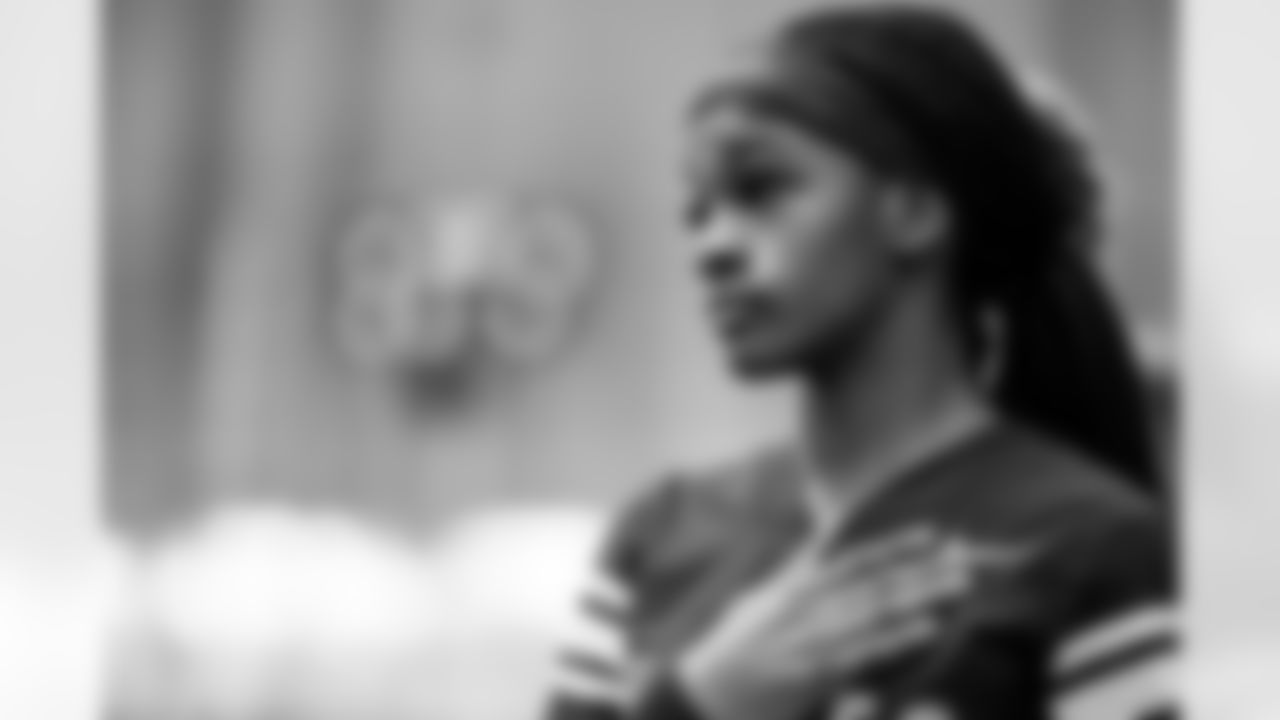
TAMPA, FL - March 26, 2024 - Alonso High School and Newsome High School flag football teams face off during the first "Battle Grounds" flag football game at AdventHealth Training Center. Photo By Tori Richman/Tampa Bay Buccaneers

TAMPA, FL - March 26, 2024 - Alonso High School and Newsome High School flag football teams face off during the first "Battle Grounds" flag football game at AdventHealth Training Center. Photo By Tori Richman/Tampa Bay Buccaneers

TAMPA, FL - March 26, 2024 - Alonso High School and Newsome High School flag football teams face off during the first "Battle Grounds" flag football game at AdventHealth Training Center. Photo By Tori Richman/Tampa Bay Buccaneers

TAMPA, FL - March 26, 2024 - Alonso High School and Newsome High School flag football teams face off during the first "Battle Grounds" flag football game at AdventHealth Training Center. Photo By Tori Richman/Tampa Bay Buccaneers
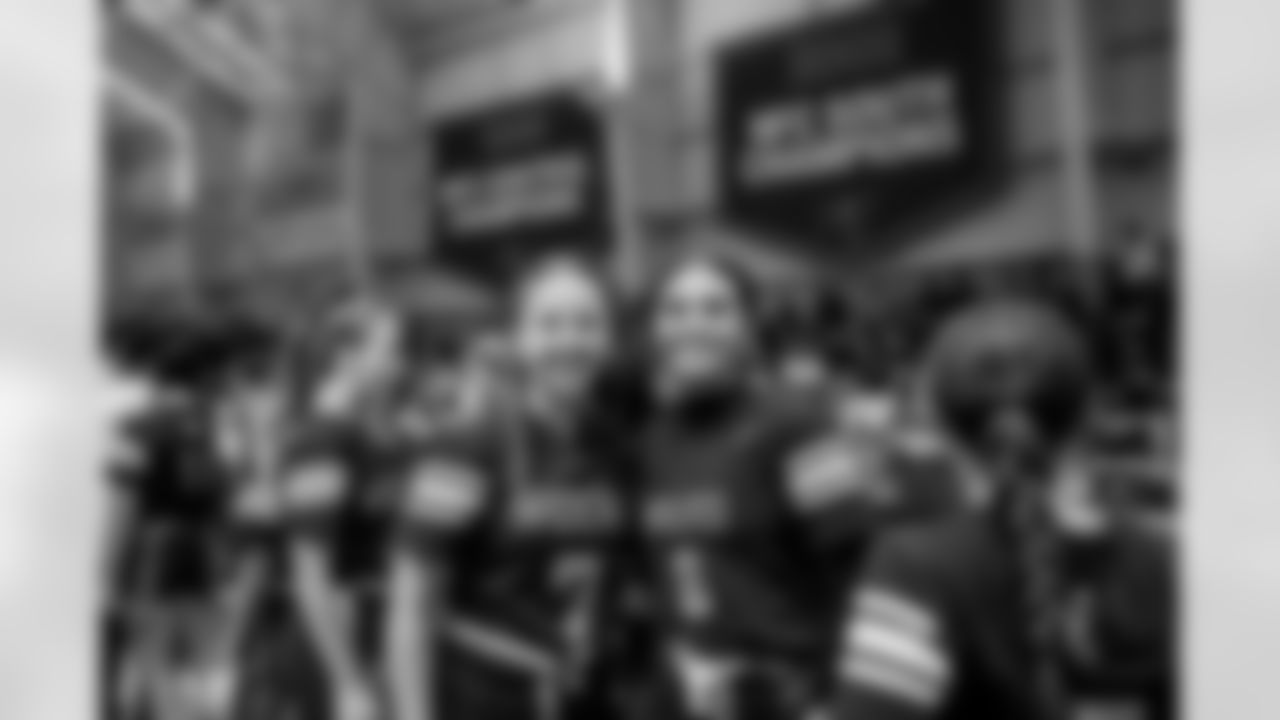
TAMPA, FL - March 26, 2024 - Alonso High School and Newsome High School flag football teams face off during the first "Battle Grounds" flag football game at AdventHealth Training Center. Photo By Tori Richman/Tampa Bay Buccaneers

TAMPA, FL - March 26, 2024 - Alonso High School and Newsome High School flag football teams face off during the first "Battle Grounds" flag football game at AdventHealth Training Center. Photo By Tori Richman/Tampa Bay Buccaneers

TAMPA, FL - March 26, 2024 - Alonso High School and Newsome High School flag football teams face off during the first "Battle Grounds" flag football game at AdventHealth Training Center. Photo By Tori Richman/Tampa Bay Buccaneers

TAMPA, FL - March 26, 2024 - Alonso High School and Newsome High School flag football teams face off during the first "Battle Grounds" flag football game at AdventHealth Training Center. Photo By Tori Richman/Tampa Bay Buccaneers

TAMPA, FL - March 26, 2024 - Alonso High School and Newsome High School flag football teams face off during the first "Battle Grounds" flag football game at AdventHealth Training Center. Photo By Tori Richman/Tampa Bay Buccaneers

TAMPA, FL - March 26, 2024 - Alonso High School and Newsome High School flag football teams face off during the first "Battle Grounds" flag football game at AdventHealth Training Center. Photo By Tori Richman/Tampa Bay Buccaneers

TAMPA, FL - March 26, 2024 - Alonso High School and Newsome High School flag football teams face off during the first "Battle Grounds" flag football game at AdventHealth Training Center. Photo By Tori Richman/Tampa Bay Buccaneers

TAMPA, FL - March 26, 2024 - Alonso High School and Newsome High School flag football teams face off during the first "Battle Grounds" flag football game at AdventHealth Training Center. Photo By Tori Richman/Tampa Bay Buccaneers

TAMPA, FL - March 26, 2024 - Alonso High School and Newsome High School flag football teams face off during the first "Battle Grounds" flag football game at AdventHealth Training Center. Photo By Tori Richman/Tampa Bay Buccaneers
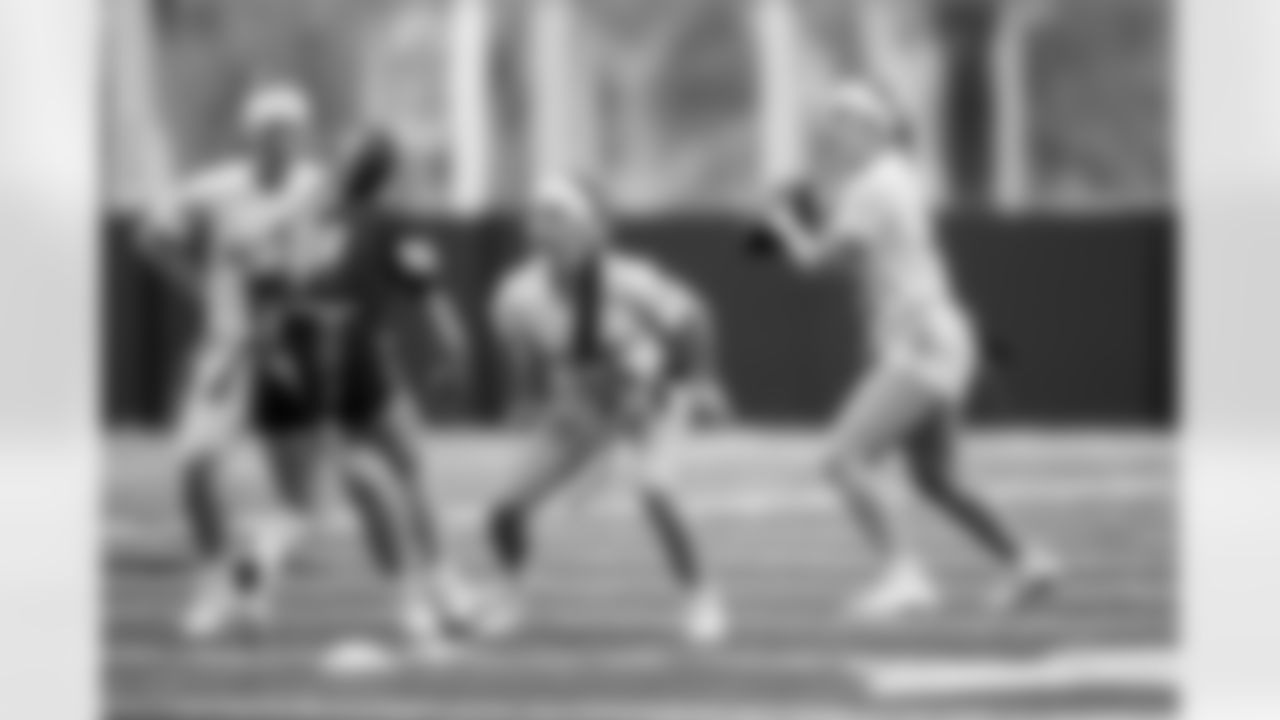
TAMPA, FL - March 26, 2024 - Alonso High School and Newsome High School flag football teams face off during the first "Battle Grounds" flag football game at AdventHealth Training Center. Photo By Tori Richman/Tampa Bay Buccaneers

TAMPA, FL - March 26, 2024 - Alonso High School and Newsome High School flag football teams face off during the first "Battle Grounds" flag football game at AdventHealth Training Center. Photo By Tori Richman/Tampa Bay Buccaneers

TAMPA, FL - March 26, 2024 - Alonso High School and Newsome High School flag football teams face off during the first "Battle Grounds" flag football game at AdventHealth Training Center. Photo By Tori Richman/Tampa Bay Buccaneers

TAMPA, FL - March 26, 2024 - Alonso High School and Newsome High School flag football teams face off during the first "Battle Grounds" flag football game at AdventHealth Training Center. Photo By Tori Richman/Tampa Bay Buccaneers

TAMPA, FL - March 26, 2024 - Alonso High School and Newsome High School flag football teams face off during the first "Battle Grounds" flag football game at AdventHealth Training Center. Photo By Tori Richman/Tampa Bay Buccaneers

TAMPA, FL - March 26, 2024 - Alonso High School and Newsome High School flag football teams face off during the first "Battle Grounds" flag football game at AdventHealth Training Center. Photo By Tori Richman/Tampa Bay Buccaneers
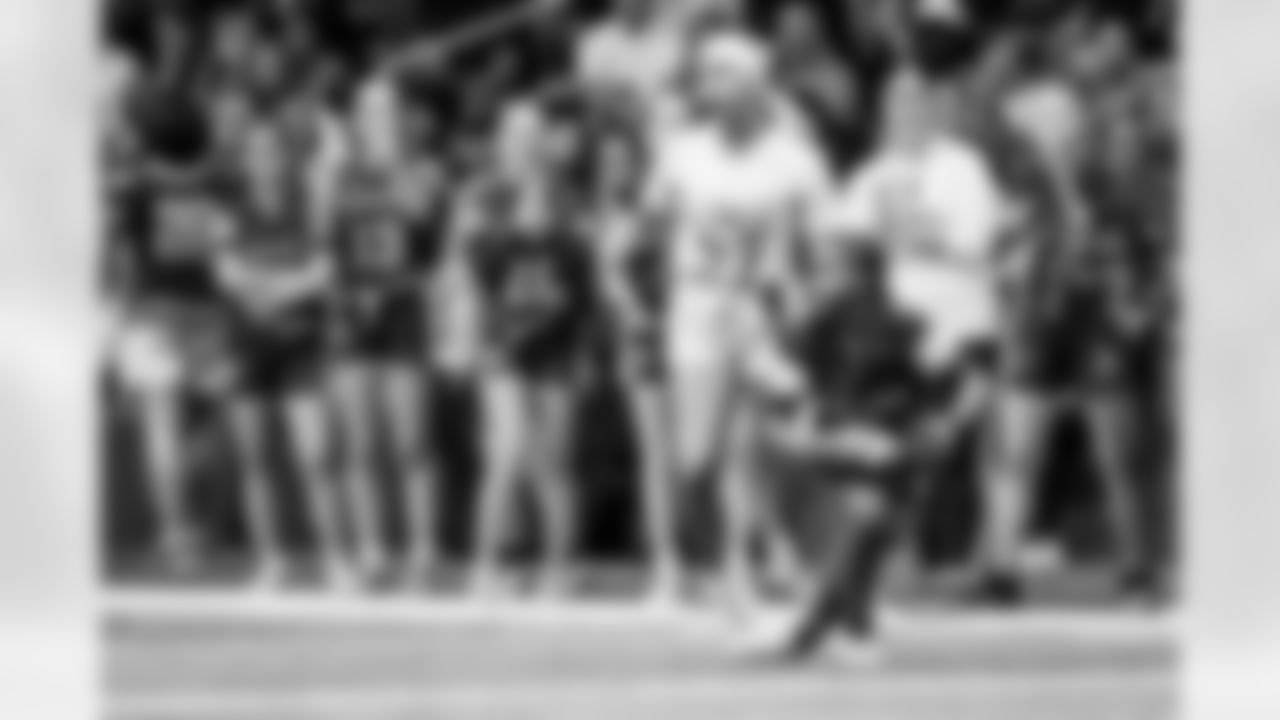
TAMPA, FL - March 26, 2024 - Alonso High School and Newsome High School flag football teams face off during the first "Battle Grounds" flag football game at AdventHealth Training Center. Photo By Tori Richman/Tampa Bay Buccaneers
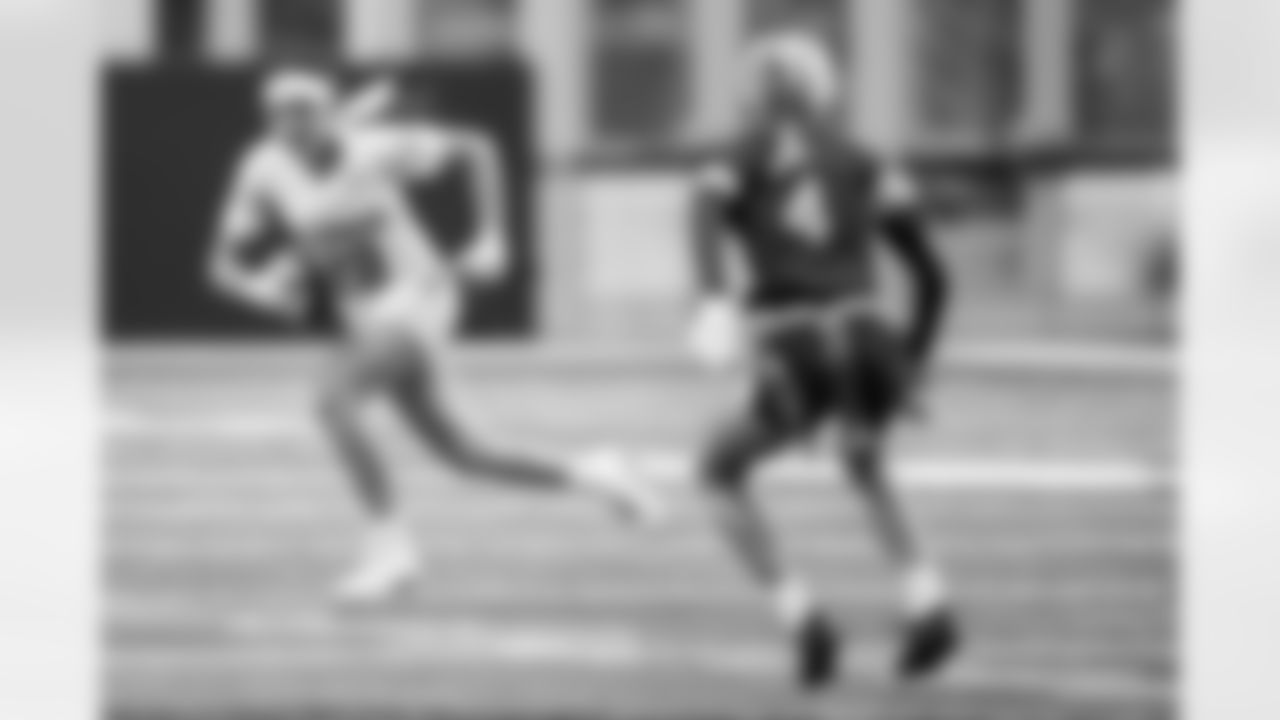
TAMPA, FL - March 26, 2024 - Alonso High School and Newsome High School flag football teams face off during the first "Battle Grounds" flag football game at AdventHealth Training Center. Photo By Tori Richman/Tampa Bay Buccaneers

TAMPA, FL - March 26, 2024 - Crowd watches as Alonso High School and Newsome High School flag football teams face off during the first "Battle Grounds" flag football game at AdventHealth Training Center. Photo By Tori Richman/Tampa Bay Buccaneers

TAMPA, FL - March 26, 2024 - Alonso High School and Newsome High School flag football teams face off during the first "Battle Grounds" flag football game at AdventHealth Training Center. Photo By Tori Richman/Tampa Bay Buccaneers

TAMPA, FL - March 26, 2024 - Alonso High School and Newsome High School flag football teams face off during the first "Battle Grounds" flag football game at AdventHealth Training Center. Photo By Tori Richman/Tampa Bay Buccaneers

TAMPA, FL - March 26, 2024 - Alonso High School and Newsome High School flag football teams face off during the first "Battle Grounds" flag football game at AdventHealth Training Center. Photo By Tori Richman/Tampa Bay Buccaneers
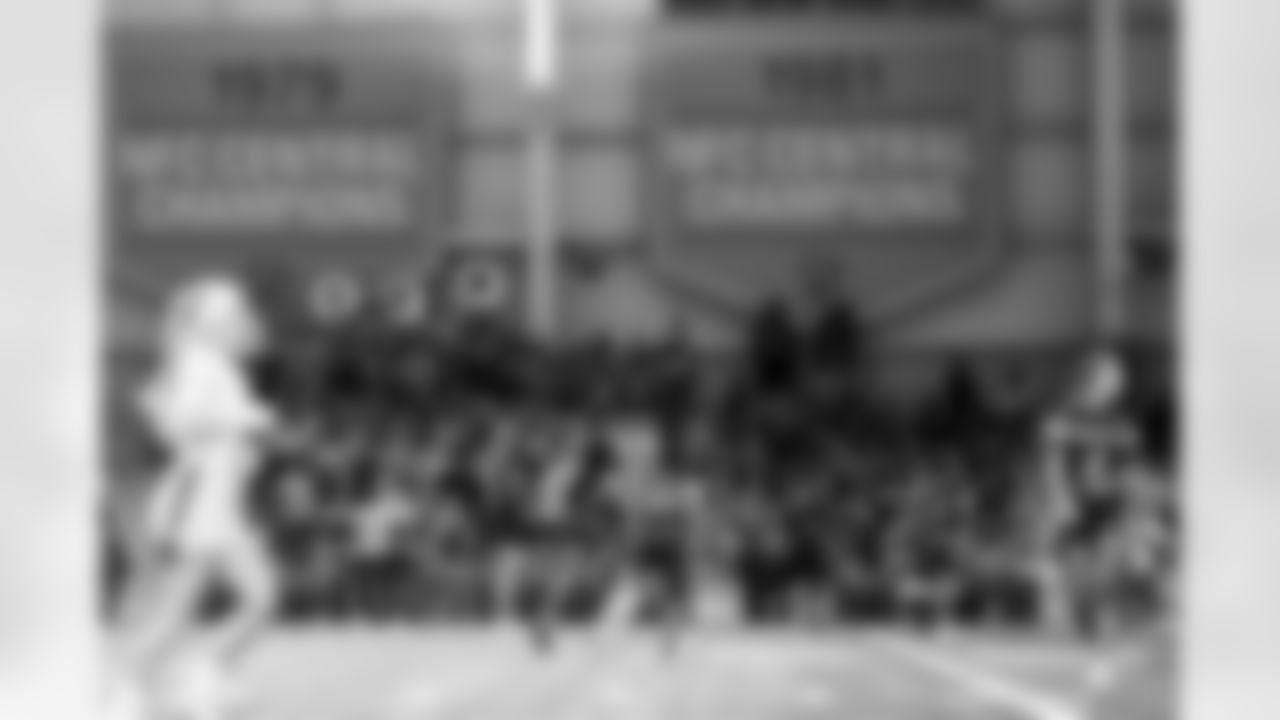
TAMPA, FL - March 26, 2024 - Crowd watches as Alonso High School and Newsome High School flag football teams face off during the first "Battle Grounds" flag football game at AdventHealth Training Center. Photo By Tori Richman/Tampa Bay Buccaneers

TAMPA, FL - March 26, 2024 - Alonso High School and Newsome High School flag football teams face off during the first "Battle Grounds" flag football game at AdventHealth Training Center. Photo By Tori Richman/Tampa Bay Buccaneers

TAMPA, FL - March 26, 2024 - Alonso High School and Newsome High School flag football teams face off during the first "Battle Grounds" flag football game at AdventHealth Training Center. Photo By Tori Richman/Tampa Bay Buccaneers

TAMPA, FL - March 26, 2024 - Alonso High School and Newsome High School flag football teams face off during the first "Battle Grounds" flag football game at AdventHealth Training Center. Photo By Tori Richman/Tampa Bay Buccaneers

TAMPA, FL - March 26, 2024 - Alonso High School and Newsome High School flag football teams face off during the first "Battle Grounds" flag football game at AdventHealth Training Center. Photo By Tori Richman/Tampa Bay Buccaneers

TAMPA, FL - March 26, 2024 - Alonso High School and Newsome High School flag football teams face off during the first "Battle Grounds" flag football game at AdventHealth Training Center. Photo By Tori Richman/Tampa Bay Buccaneers

TAMPA, FL - March 26, 2024 - Alonso High School and Newsome High School flag football teams face off during the first "Battle Grounds" flag football game at AdventHealth Training Center. Photo By Tori Richman/Tampa Bay Buccaneers

TAMPA, FL - March 26, 2024 - Alonso High School and Newsome High School flag football teams face off during the first "Battle Grounds" flag football game at AdventHealth Training Center. Photo By Tori Richman/Tampa Bay Buccaneers

TAMPA, FL - March 26, 2024 - Alonso High School and Newsome High School flag football teams face off during the first "Battle Grounds" flag football game at AdventHealth Training Center. Photo By Tori Richman/Tampa Bay Buccaneers
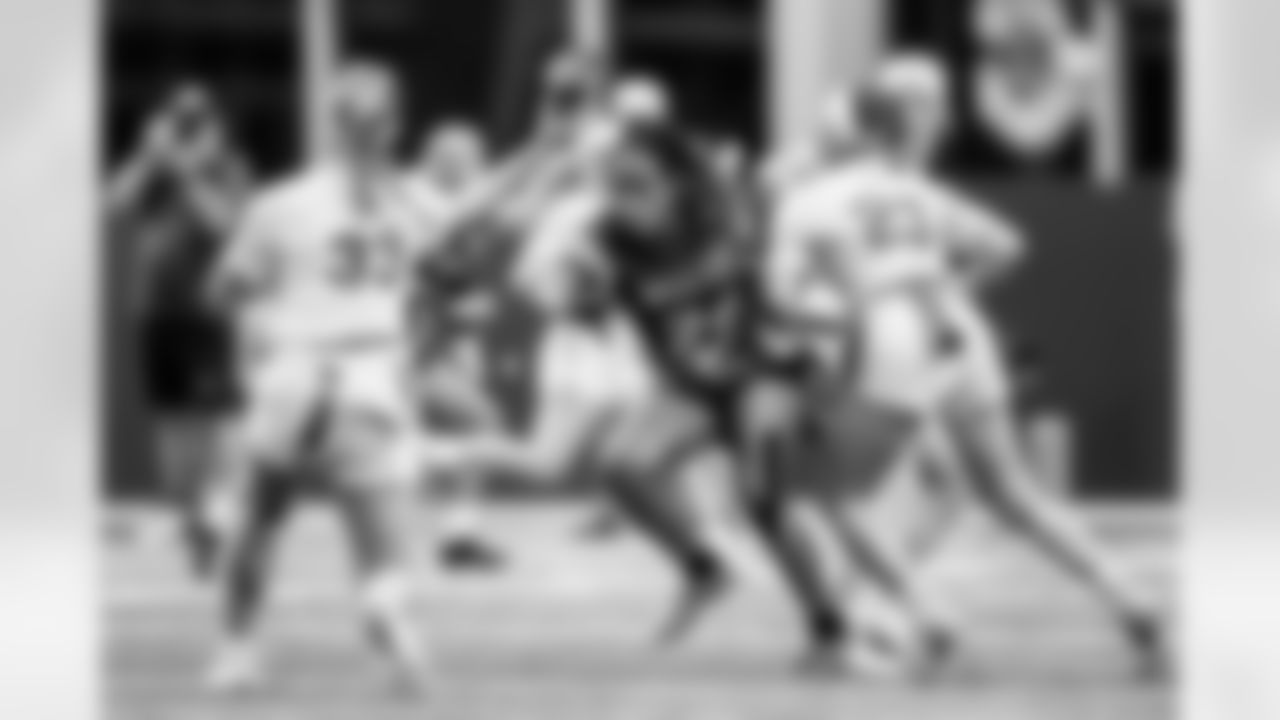
TAMPA, FL - March 26, 2024 - Alonso High School and Newsome High School flag football teams face off during the first "Battle Grounds" flag football game at AdventHealth Training Center. Photo By Tori Richman/Tampa Bay Buccaneers

TAMPA, FL - March 26, 2024 - Alonso High School and Newsome High School flag football teams face off during the first "Battle Grounds" flag football game at AdventHealth Training Center. Photo By Tori Richman/Tampa Bay Buccaneers

TAMPA, FL - March 26, 2024 - Alonso High School and Newsome High School flag football teams face off during the first "Battle Grounds" flag football game at AdventHealth Training Center. Photo By Tori Richman/Tampa Bay Buccaneers

TAMPA, FL - March 26, 2024 - Alonso High School and Newsome High School flag football teams face off during the first "Battle Grounds" flag football game at AdventHealth Training Center. Photo By Tori Richman/Tampa Bay Buccaneers

TAMPA, FL - March 26, 2024 - Alonso High School and Newsome High School flag football teams face off during the first "Battle Grounds" flag football game at AdventHealth Training Center. Photo By Tori Richman/Tampa Bay Buccaneers

TAMPA, FL - March 26, 2024 - Alonso High School and Newsome High School flag football teams face off during the first "Battle Grounds" flag football game at AdventHealth Training Center. Photo By Tori Richman/Tampa Bay Buccaneers

TAMPA, FL - March 26, 2024 - Alonso High School and Newsome High School flag football teams face off during the first "Battle Grounds" flag football game at AdventHealth Training Center. Photo By Tori Richman/Tampa Bay Buccaneers

TAMPA, FL - March 26, 2024 - Alonso High School and Newsome High School flag football teams face off during the first "Battle Grounds" flag football game at AdventHealth Training Center. Photo By Tori Richman/Tampa Bay Buccaneers

TAMPA, FL - March 26, 2024 - Alonso High School and Newsome High School flag football teams face off during the first "Battle Grounds" flag football game at AdventHealth Training Center. Photo By Tori Richman/Tampa Bay Buccaneers

TAMPA, FL - March 26, 2024 - Alonso High School and Newsome High School flag football teams face off during the first "Battle Grounds" flag football game at AdventHealth Training Center. Photo By Tori Richman/Tampa Bay Buccaneers
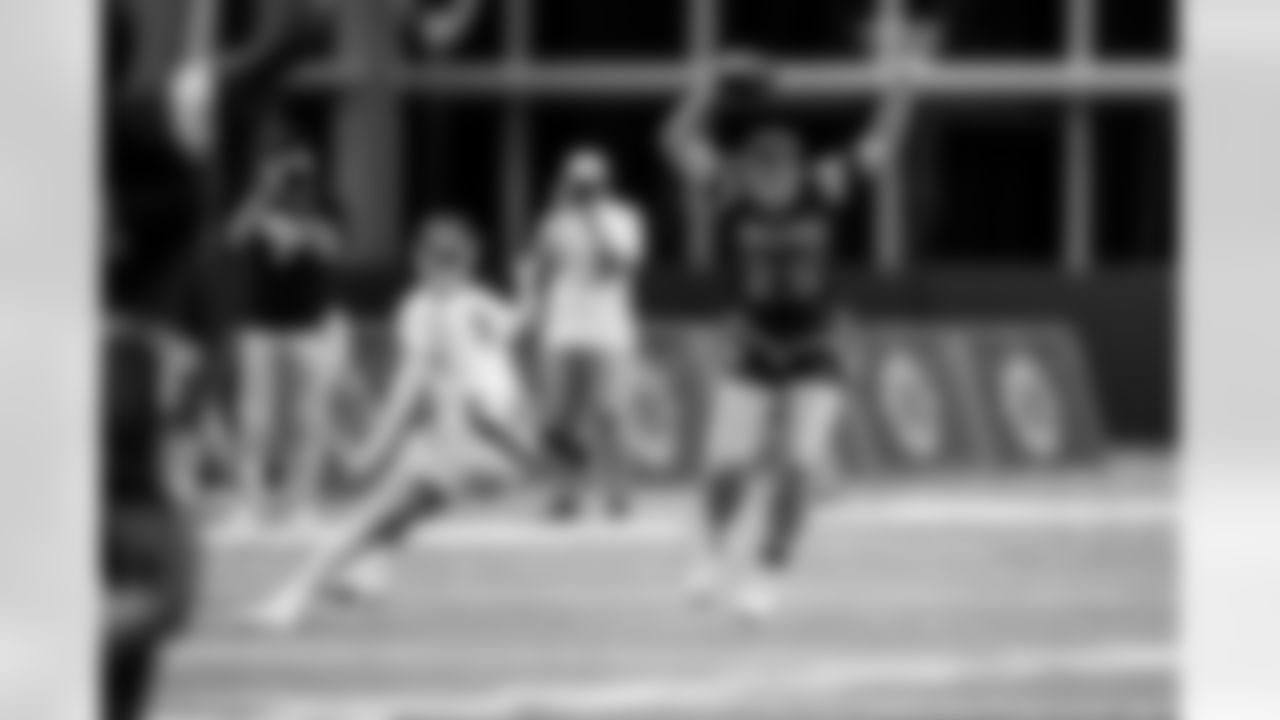
TAMPA, FL - March 26, 2024 - Alonso High School and Newsome High School flag football teams face off during the first "Battle Grounds" flag football game at AdventHealth Training Center. Photo By Tori Richman/Tampa Bay Buccaneers

TAMPA, FL - March 26, 2024 - Alonso High School and Newsome High School flag football teams face off during the first "Battle Grounds" flag football game at AdventHealth Training Center. Photo By Tori Richman/Tampa Bay Buccaneers
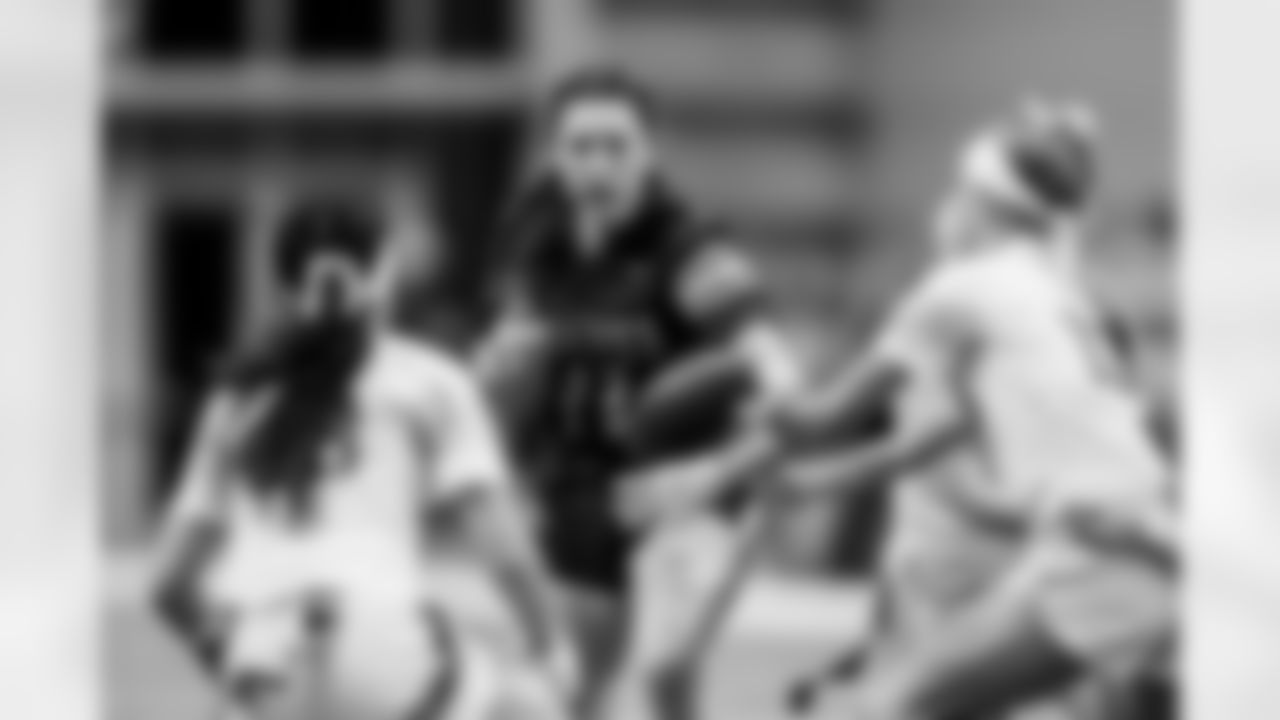
TAMPA, FL - March 26, 2024 - Alonso High School and Newsome High School flag football teams face off during the first "Battle Grounds" flag football game at AdventHealth Training Center. Photo By Tori Richman/Tampa Bay Buccaneers

TAMPA, FL - March 26, 2024 - Alonso High School and Newsome High School flag football teams face off during the first "Battle Grounds" flag football game at AdventHealth Training Center. Photo By Tori Richman/Tampa Bay Buccaneers

TAMPA, FL - March 26, 2024 - Alonso High School and Newsome High School flag football teams face off during the first "Battle Grounds" flag football game at AdventHealth Training Center. Photo By Tori Richman/Tampa Bay Buccaneers
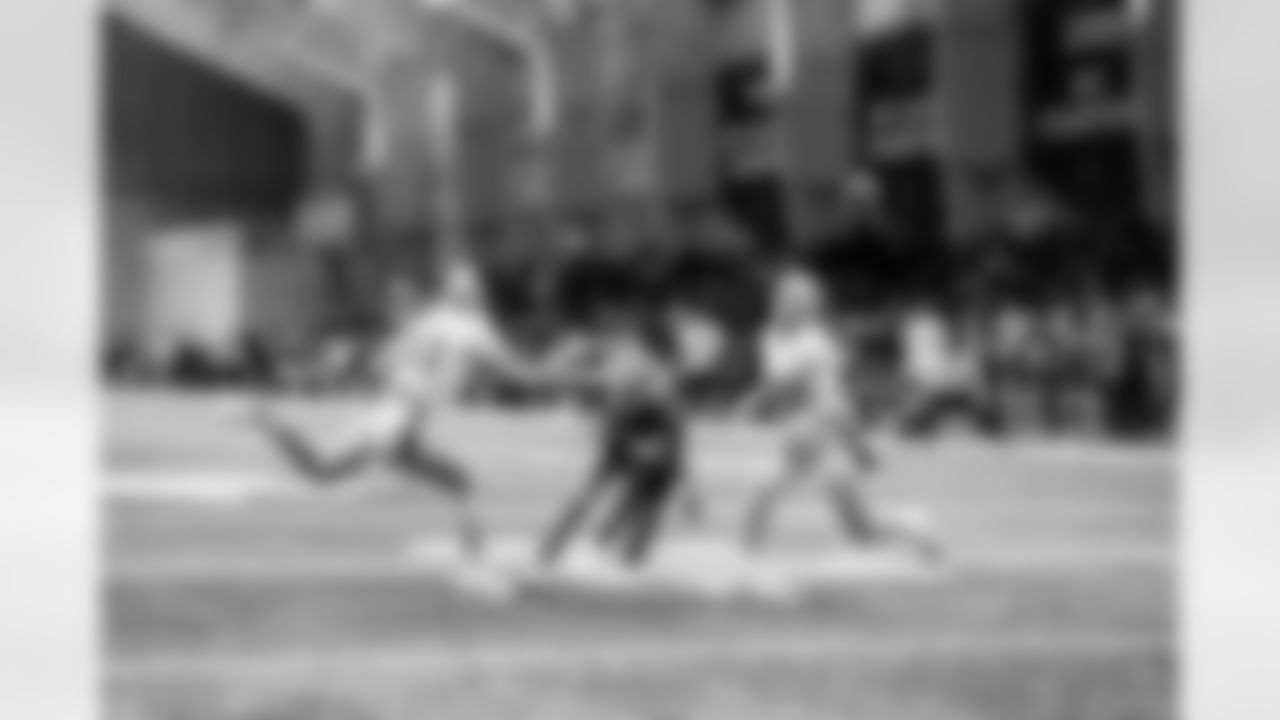
TAMPA, FL - March 26, 2024 - Alonso High School and Newsome High School flag football teams face off during the first "Battle Grounds" flag football game at AdventHealth Training Center. Photo By Tori Richman/Tampa Bay Buccaneers

TAMPA, FL - March 26, 2024 - Alonso High School and Newsome High School flag football teams face off during the first "Battle Grounds" flag football game at AdventHealth Training Center. Photo By Tori Richman/Tampa Bay Buccaneers

TAMPA, FL - March 26, 2024 - Alonso High School and Newsome High School flag football teams face off during the first "Battle Grounds" flag football game at AdventHealth Training Center. Photo By Tori Richman/Tampa Bay Buccaneers

TAMPA, FL - March 26, 2024 - Alonso High School and Newsome High School flag football teams face off during the first "Battle Grounds" flag football game at AdventHealth Training Center. Photo By Tori Richman/Tampa Bay Buccaneers
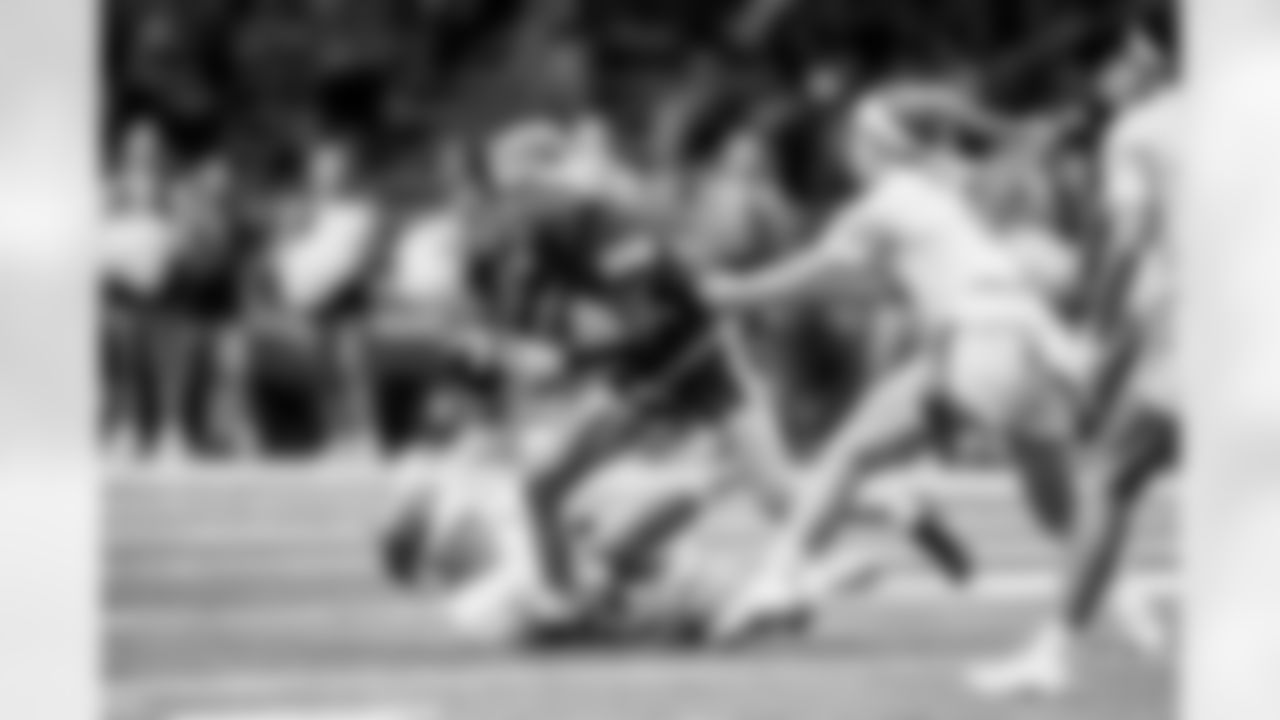
TAMPA, FL - March 26, 2024 - Alonso High School and Newsome High School flag football teams face off during the first "Battle Grounds" flag football game at AdventHealth Training Center. Photo By Tori Richman/Tampa Bay Buccaneers
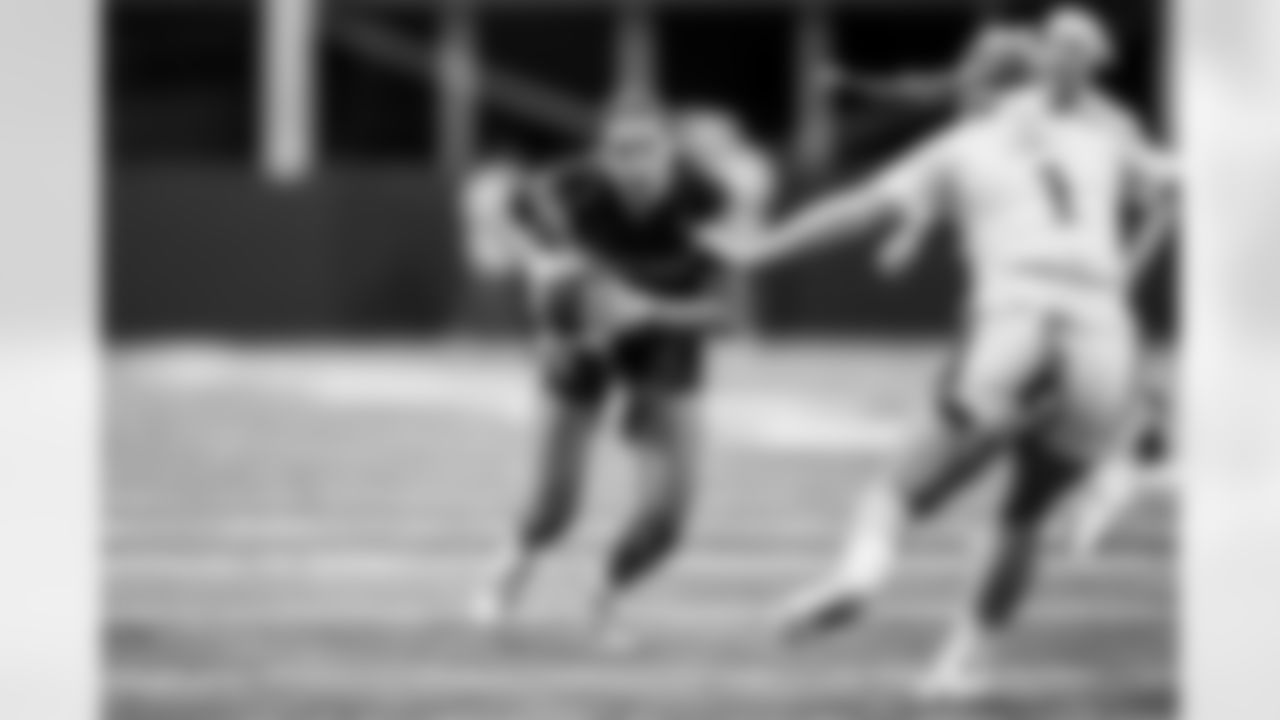
TAMPA, FL - March 26, 2024 - Alonso High School and Newsome High School flag football teams face off during the first "Battle Grounds" flag football game at AdventHealth Training Center. Photo By Tori Richman/Tampa Bay Buccaneers

TAMPA, FL - March 26, 2024 - Alonso High School and Newsome High School flag football teams face off during the first "Battle Grounds" flag football game at AdventHealth Training Center. Photo By Tori Richman/Tampa Bay Buccaneers

TAMPA, FL - March 26, 2024 - Alonso High School and Newsome High School flag football teams face off during the first "Battle Grounds" flag football game at AdventHealth Training Center. Photo By Tori Richman/Tampa Bay Buccaneers

TAMPA, FL - March 26, 2024 - Alonso High School and Newsome High School flag football teams face off during the first "Battle Grounds" flag football game at AdventHealth Training Center. Photo By Tori Richman/Tampa Bay Buccaneers

TAMPA, FL - March 26, 2024 - Alonso High School and Newsome High School flag football teams face off during the first "Battle Grounds" flag football game at AdventHealth Training Center. Photo By Tori Richman/Tampa Bay Buccaneers

TAMPA, FL - March 26, 2024 - Alonso High School and Newsome High School flag football teams face off during the first "Battle Grounds" flag football game at AdventHealth Training Center. Photo By Tori Richman/Tampa Bay Buccaneers

TAMPA, FL - March 26, 2024 - Alonso High School and Newsome High School flag football teams face off during the first "Battle Grounds" flag football game at AdventHealth Training Center. Photo By Tori Richman/Tampa Bay Buccaneers

TAMPA, FL - March 26, 2024 - Alonso High School and Newsome High School flag football teams face off during the first "Battle Grounds" flag football game at AdventHealth Training Center. Photo By Tori Richman/Tampa Bay Buccaneers

TAMPA, FL - March 26, 2024 - Alonso High School and Newsome High School flag football teams face off during the first "Battle Grounds" flag football game at AdventHealth Training Center. Photo By Tori Richman/Tampa Bay Buccaneers

TAMPA, FL - March 26, 2024 - Alonso High School and Newsome High School flag football teams face off during the first "Battle Grounds" flag football game at AdventHealth Training Center. Photo By Tori Richman/Tampa Bay Buccaneers

TAMPA, FL - March 26, 2024 - Alonso High School and Newsome High School flag football teams face off during the first "Battle Grounds" flag football game at AdventHealth Training Center. Photo By Tori Richman/Tampa Bay Buccaneers

TAMPA, FL - March 26, 2024 - Alonso High School and Newsome High School flag football teams face off during the first "Battle Grounds" flag football game at AdventHealth Training Center. Photo By Tori Richman/Tampa Bay Buccaneers

TAMPA, FL - March 26, 2024 - Alonso High School and Newsome High School flag football teams face off during the first "Battle Grounds" flag football game at AdventHealth Training Center. Photo By Tori Richman/Tampa Bay Buccaneers

TAMPA, FL - March 26, 2024 - Alonso High School and Newsome High School flag football teams face off during the first "Battle Grounds" flag football game at AdventHealth Training Center. Photo By Tori Richman/Tampa Bay Buccaneers

TAMPA, FL - March 26, 2024 - Alonso High School and Newsome High School flag football teams face off during the first "Battle Grounds" flag football game at AdventHealth Training Center. Photo By Tori Richman/Tampa Bay Buccaneers

TAMPA, FL - March 26, 2024 - Alonso High School and Newsome High School flag football teams face off during the first "Battle Grounds" flag football game at AdventHealth Training Center. Photo By Tori Richman/Tampa Bay Buccaneers

TAMPA, FL - March 26, 2024 - Alonso High School and Newsome High School flag football teams face off during the first "Battle Grounds" flag football game at AdventHealth Training Center. Photo By Tori Richman/Tampa Bay Buccaneers

TAMPA, FL - March 26, 2024 - Alonso High School and Newsome High School flag football teams face off during the first "Battle Grounds" flag football game at AdventHealth Training Center. Photo By Tori Richman/Tampa Bay Buccaneers

TAMPA, FL - March 26, 2024 - Alonso High School and Newsome High School flag football teams face off during the first "Battle Grounds" flag football game at AdventHealth Training Center. Photo By Tori Richman/Tampa Bay Buccaneers

TAMPA, FL - March 26, 2024 - Alonso High School and Newsome High School flag football teams face off during the first "Battle Grounds" flag football game at AdventHealth Training Center. Photo By Tori Richman/Tampa Bay Buccaneers

TAMPA, FL - March 26, 2024 - Alonso High School and Newsome High School flag football teams face off during the first "Battle Grounds" flag football game at AdventHealth Training Center. Photo By Tori Richman/Tampa Bay Buccaneers

































